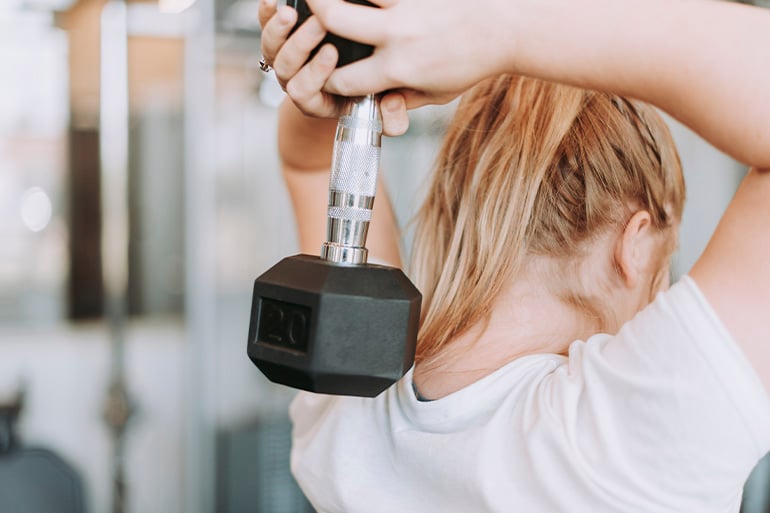June 29, 2023
May 24, 2023
Whether you are a seasoned expat, or just recently arrived, giving birth in Spain can be a beautiful, albeit overwhelming experience in so many ways. There are so many items to keep track of pre-birth–everything from what feels like hundreds of doctor’s appointments, to birthing classes, to loads of nesting and prepping for baby’s arrival at home, not to mention getting all of those baby essentials and reading every blog you can get your hands on. Sometimes, however, we get so caught up in preparing for the arrival, that what happens after you give birth goes by the wayside. Then the real fun begins of learning the wild ropes of parenting at an incredibly fast pace. However, pregnancy and childbirth is incredibly strenuous on the female body, and taking care of it postpartum is an absolute necessity, which is why pelvic floor rehabilitation is becoming more and more common after giving birth.

What is pelvic floor rehabilitation?
Pelvic floor rehabilitation is a specialized form of physical therapy that focuses on treating disorders related to the pelvic floor muscles. The pelvic floor is a group of muscles that forms a hammock-like structure at the base of the pelvis and plays a crucial role in supporting the bladder, uterus, and rectum. Pelvic floor rehabilitation can help individuals with a range of conditions, such as urinary incontinence, pelvic pain, and sexual dysfunction. The pelvic floor is also strained during childbirth, which is why it is of vital importance that new mothers have access to this care postpartum.
Access to pelvic floor rehabilitation in Spain
Due to more overall awareness of the need for complete care for new mothers as well as others suffering from pelvic floor complications, many private physical therapy offices specialize in this type of care. However, this treatment is not currently offered in the Spanish public healthcare system, therefore if you utilize this system, you will need to pay for sessions out of pocket, which can cost roughly €50 per session. Read on to learn more about which of Caser Expat Insurance’s plans cover pelvic floor rehabilitation.
Types of Pelvic Floor Rehabilitation
The following are a few types of pelvic floor rehabilitation that your physical therapist may recommend and practice with you during your visits. Most physical therapist will first assess the strength of your pelvic floor through various exercises, create a specific plan to follow at home, and offer packs of sessions in 5 or 10 to monitor your progress.
-
Kegel Exercises
Kegel exercises are one of the most common and effective ways to strengthen the pelvic floor muscles. They involve contracting and relaxing the muscles that control the flow of urine. By doing Kegel exercises regularly, individuals can improve their bladder control and reduce urinary incontinence. Kegel exercises are also highly recommended pre-labor in order to strengthen the muscles and lower the risk of pelvic floor complications postpartum.
There are several variations of Kegel exercises, including quick contractions, slow contractions, and holding the contractions for longer periods. A physical therapist can help individuals learn how to do Kegel exercises correctly and develop a personalized exercise plan.
-
Biofeedback
Biofeedback is a technique that helps individuals learn how to control their pelvic floor muscles by providing visual or auditory feedback. During a biofeedback session, electrodes are placed on the pelvic floor muscles, and a computer screen or device displays the activity of the muscles.
By watching the feedback, individuals can learn how to contract and relax their pelvic floor muscles effectively. Biofeedback can be a useful tool for individuals who have difficulty performing Kegel exercises correctly or have muscle weakness.
-
Electrical Stimulation
Electrical stimulation involves using a device to deliver electrical impulses to the pelvic floor muscles. The impulses can help to strengthen the muscles and improve their function. Electrical stimulation can be used alone or in combination with other forms of pelvic floor rehabilitation.
During an electrical stimulation session, electrodes are placed on the pelvic floor muscles, and a device delivers a mild electrical current to the muscles. The electrical current causes the muscles to contract and relax, which can improve muscle strength and control.
-
Pelvic Floor Massage
Pelvic floor massage involves manually manipulating the muscles in the pelvic floor to improve their function. The massage can help to reduce muscle tension, improve blood flow to the area, and reduce pain and discomfort.
A physical therapist can perform pelvic floor massage or teach individuals how to do it themselves. Pelvic floor massage can be a useful tool for individuals who have pelvic pain or muscle tension.
-
Global Body Exercises
This may include lumbar spine flexibilization by way of stretching aimed at the lower train and lumbosacral region and breathing exercises. Making changes in daily habits and routines may also be suggested to improve pelvic floor function. For example, individuals may be advised to avoid certain foods or drinks that irritate the bladder or to practice timed voiding to reduce urinary incontinence.
-
Manual Therapy
Manual therapy involves using hands-on techniques to improve pelvic floor function. This can include techniques such as soft tissue mobilization, joint mobilization, and myofascial release. Manual therapy can help to improve muscle function, reduce muscle tension, and improve mobility.
A physical therapist can perform manual therapy or teach individuals how to do it themselves. Manual therapy can be a useful tool for individuals who have pelvic pain or muscle tension.

Pelvic floor rehabilitation coverage with Caser Expat Insurance
Caser Expat Insurance believes in consistently providing comprehensive care options in our insurance packages, and with the statistics of 1 in 3 women suffering a pelvic floor disorder in their lifetimes, this kind of coverage seems more than necessary. The following insurance plans all include coverage of pelvic floor rehabilitation:
Find out all the differences in each plan by clicking on our compare and find the plan that is right for you, you can also calculate your quote in less than a minute .
In conclusion
When you’re choosing any insurance plan, be sure to check not only for pregnancy and childbirth coverage, but also postpartum maternal care coverage, such as pelvic floor rehabilitation. Pelvic floor rehabilitation is a specialized form of physical therapy that can help individuals with a range of pelvic floor disorders, which can often result after childbirth. There are several types of treatment options available, including Kegel exercises, biofeedback, electrical stimulation, pelvic floor massage, behavioral modifications, and manual therapy. This type of physical therapy can be of great assistance to new mothers, and anyone suffering from pelvic floor disorders, but each patient should speak with their medical care provider to find a treatment plan that is best suited to their needs.
|
If you are searching for health insurance in Spain, Caser Expat Insurance has the right policy for you!
|
.png?width=344&height=67&name=logo_caser%20(2).png)







Let Us Know What You Thought about this Post.
Put your Comment Below.